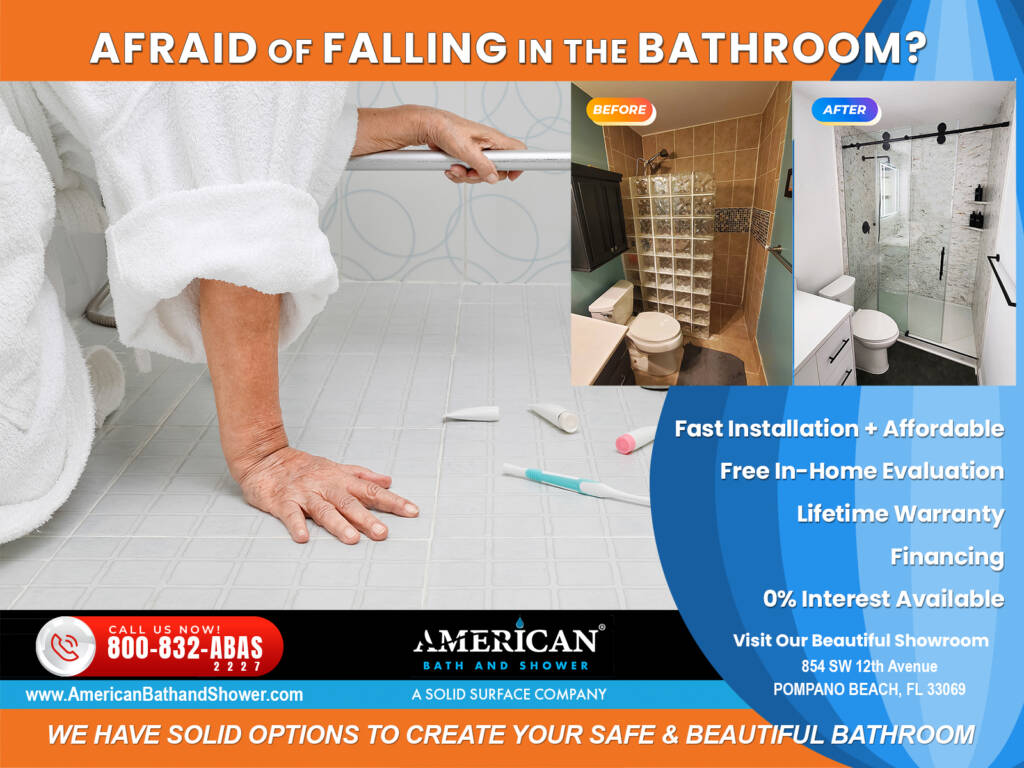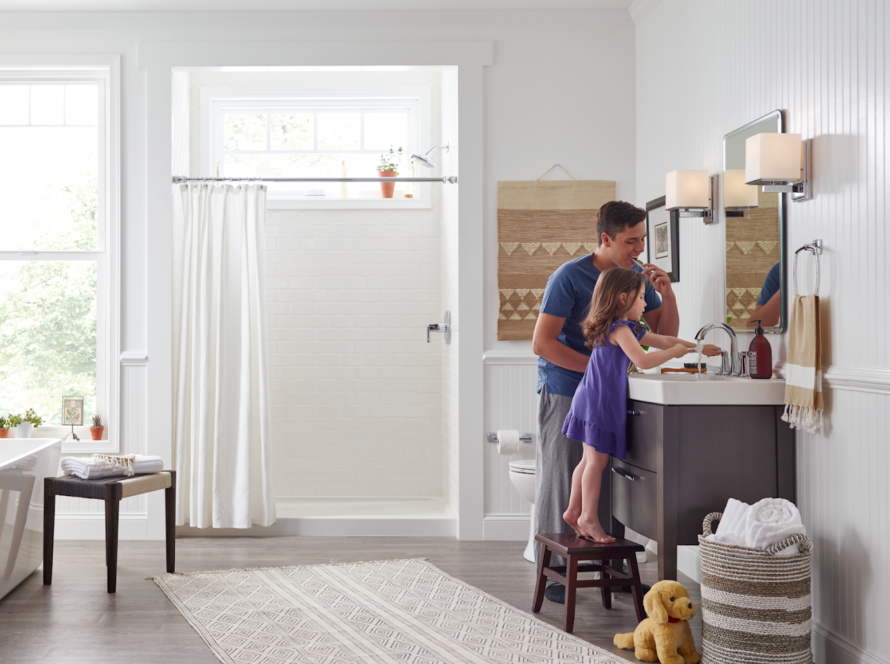Bathrooms are among the most hazardous areas in the home for older adults. With tiled floors, slippery surfaces, tight spaces, and hard materials, it’s no surprise that approximately 80% of falls in people aged 65 and older occur in the bathroom. Ensuring bathroom safety is vital for preventing these falls and accidents, which are leading causes of injury among the elderly. This guide provides essential tips and recommendations to make bathrooms safer and more accessible for older adults.
1. Install Grab Bars
Why They’re Important: Grab bars offer crucial support and stability, reducing the risk of falls when entering or exiting the shower, bath, or toilet.
Where to Install:
- Shower and Bath: Install bars inside and outside the shower or bathtub for safe entry and exit.
- Toilet Area: Place a bar near the toilet to aid with sitting down and standing up.
Tips for Installation:
- Ensure grab bars are securely mounted into wall studs, not just drywall.
- Opt for bars with a non-slip surface for better grip.
2. Use Non-Slip Mats and Rugs
Why They’re Important: Wet bathroom floors are highly slippery, increasing the risk of falls.
Where to Use:
- Shower and Bath: Place non-slip mats or adhesive strips inside the shower or tub to prevent slipping.
- Bathroom Floor: Use a non-slip rug or mat outside the shower or bath to absorb water and reduce slipperiness.
Tips for Selection:
- Choose mats with a rubber backing to keep them in place.
- Ensure mats are easy to wash and maintain.
3. Adjust Water Temperature
Why It’s Important: Scalding water can cause severe burns, especially if reflexes are slower.
How to Adjust:
- Water Heater Settings: Set the water heater to a maximum of 120°F (49°C) to prevent scalding.
- Shower Controls: Install a thermostatic mixing valve to regulate water temperature in the shower.
4. Improve Lighting
Why It’s Important: Proper lighting helps prevent trips and falls, particularly in low-light conditions.
Where to Improve Lighting:
- General Illumination: Ensure the bathroom has bright overhead lights.
- Night Lights: Use motion-sensor night lights in the bathroom and along the path to it for visibility at night.
Tips for Lighting:
- Use bright, energy-efficient bulbs.
- Ensure light switches are easily accessible; consider illuminated switches for ease of use.

5. Consider a Shower Bench
Why It’s Important: A shower bench provides a safe place to sit while bathing, which reduces the risk of slips and falls.
Types of Benches:
- Built-In Benches: Fixed seats installed directly into the shower.
- Portable Benches: Lightweight, foldable benches that can be used as needed.
Tips for Use:
- Ensure the bench is sturdy and securely positioned.
- Check for non-slip feet or pads to prevent movement.
6. Use a Raised Toilet Seat
Why It’s Important: A raised toilet seat can make sitting down and standing up easier, which is beneficial for those with mobility challenges.
Types of Raised Seats:
- Add-On Seats: Attach to the existing toilet for added height.
- Toilet Lifts: Mechanically assist with standing up from the toilet.
Tips for Selection:
- Choose a seat that fits securely and is stable.
- Ensure it is easy to clean and maintain.
7. Keep Essentials Within Reach
Why It’s Important: Storing frequently used items within easy reach prevents unnecessary bending and stretching, which can reduce the risk of falls.
Where to Store Essentials:
- Shower/Bath: Install shelves or caddies at a convenient height.
- Toilet Area: Keep toiletries and hygiene products on accessible shelves or in drawers.
Tips for Organization:
- Use clear bins or labeled containers for easy identification.
- Keep the bathroom clutter-free to maintain a clear, safe walking path.
8. Regular Maintenance and Check-Ups
Why It’s Important: Regular inspection and maintenance ensure that bathroom features remain safe and functional.
Maintenance Checklist:
- Check Grab Bars: Ensure they are securely mounted and not loose.
- Inspect Mats and Rugs: Replace any worn or damaged mats.
- Examine Fixtures: Ensure all fixtures are in good condition and replace any broken parts promptly.
Tips for Check-Ups:
- Schedule regular inspections as part of your home maintenance routine.
- Address any issues immediately to prevent accidents.
Conclusion
Implementing these bathroom safety measures can significantly reduce the risk of falls and accidents for older adults, creating a safer and more comfortable environment. Prioritizing bathroom safety not only helps protect physical health but also enhances overall well-being and peace of mind. Small adjustments can make a big difference in maintaining independence and comfort.
For more tips on home safety and senior living, follow our blog and stay informed about ways to improve the quality of life for yourself or your loved ones.



